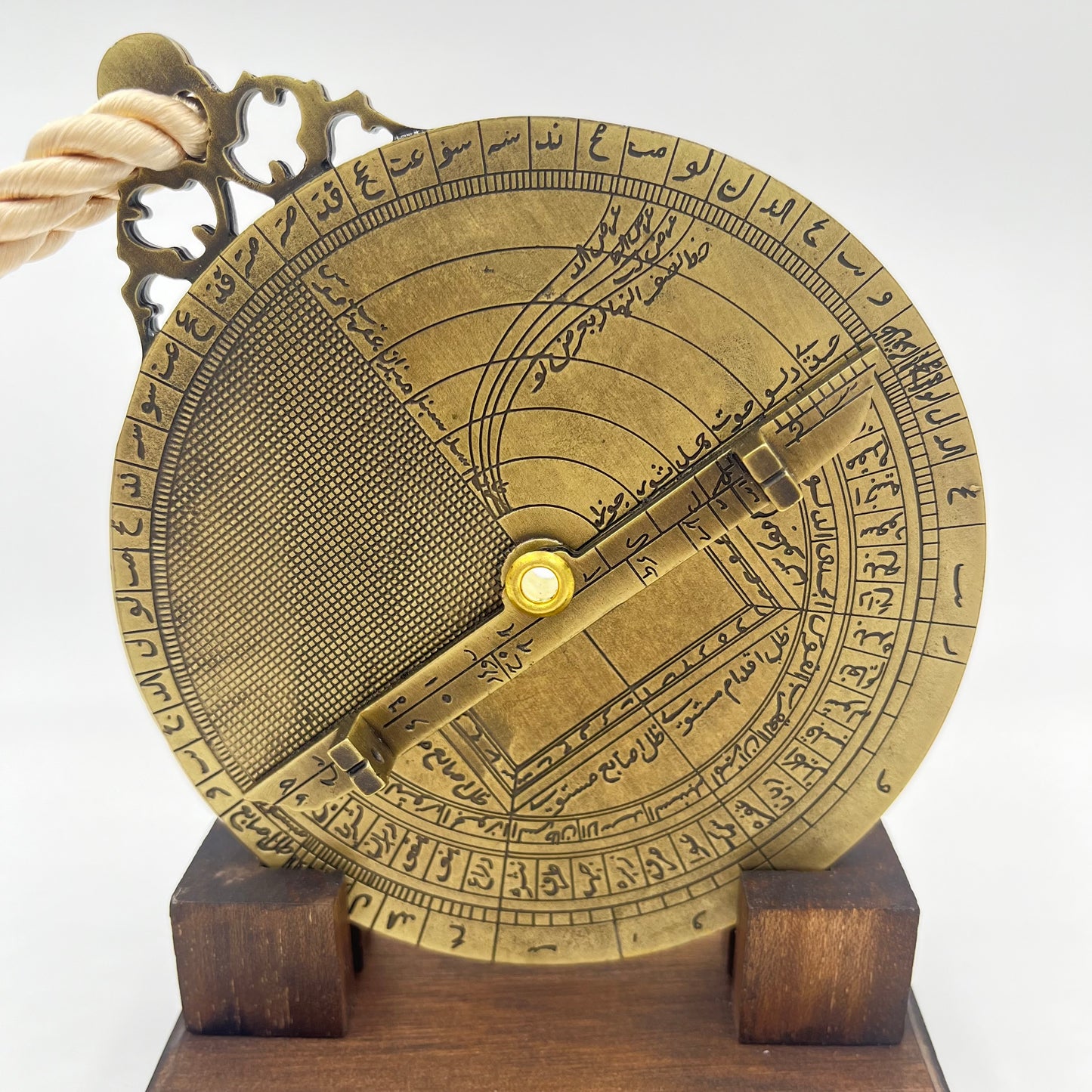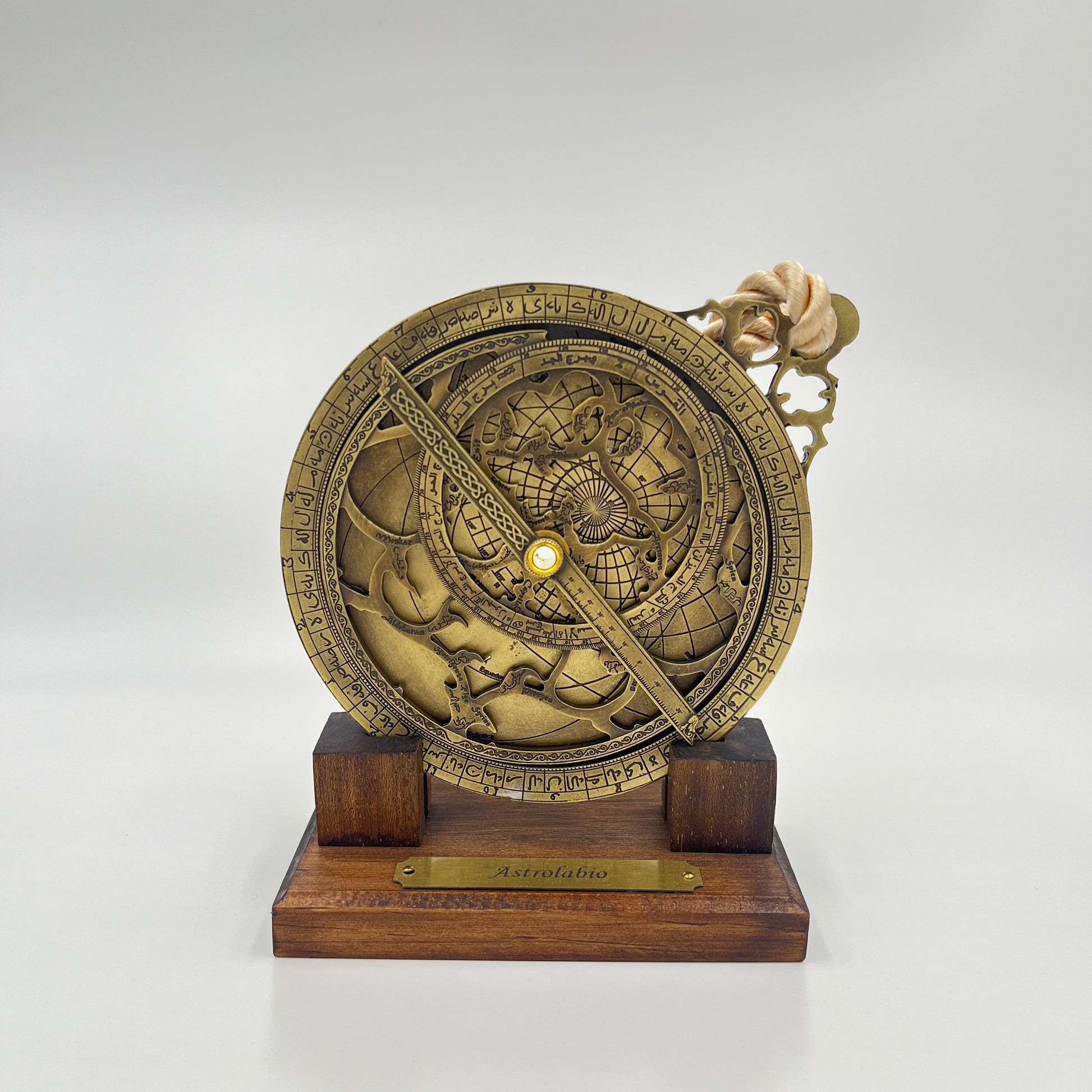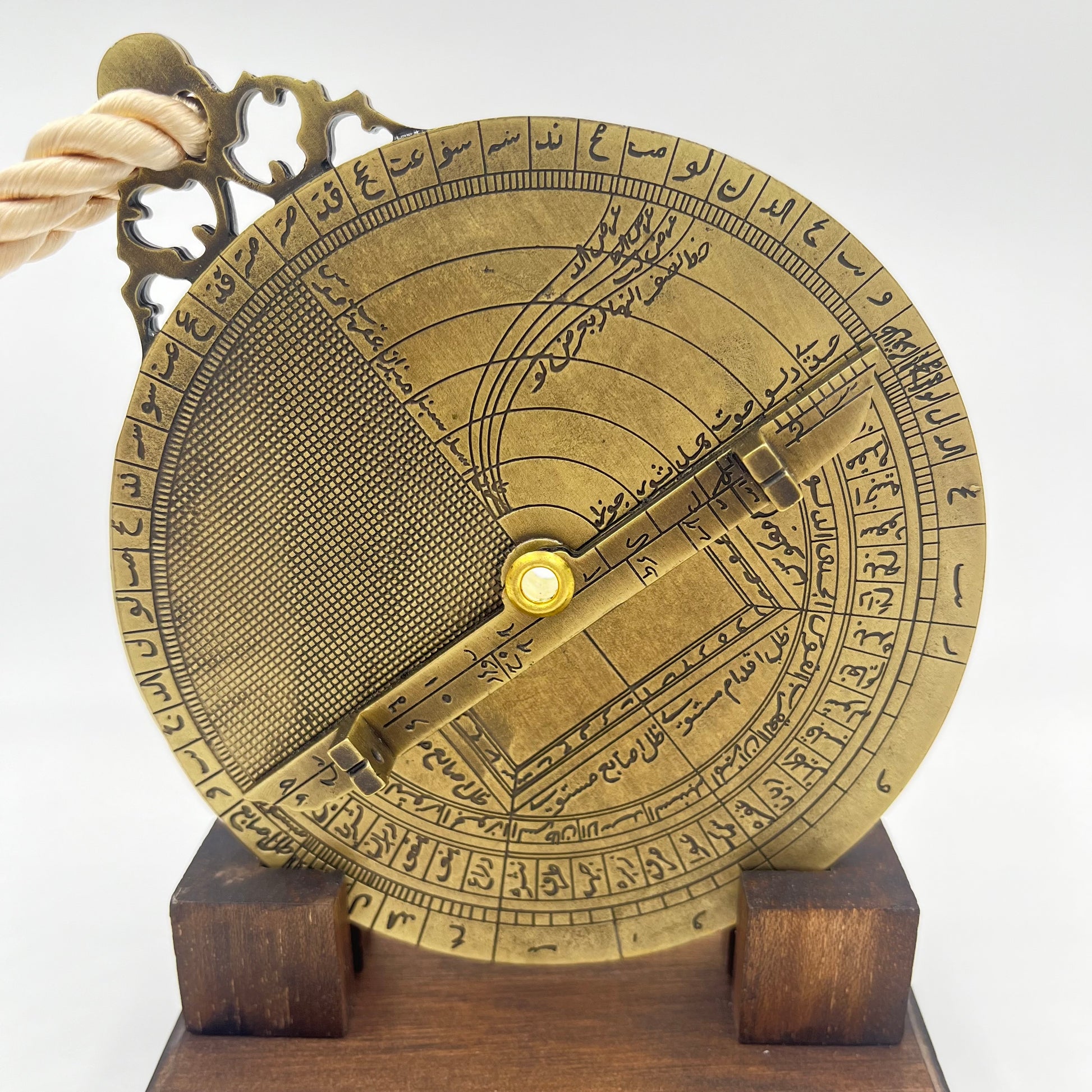Ephemundi
Arabic astrolabe
Arabic astrolabe
Couldn't load pickup availability
Share
Origin: Spain.
Provenance: Antiquus viejos inventos.
Period: 21th century.
Material: Bronze plated metal.
Size: 10cm d x 0.5cm x 12cm h.
Condition: New (replica).
The use of the astrolabe in the Arab world began in the East (the Mashriq) in what we know today as Syria, Lebanon, Jordan and Egypt, immediately and widely spreading its use throughout North Africa (the Maghrib), entering almost immediately into Muslim Spain, with examples made in Toledo already being found in the 11th century.
However, much earlier in the 5th century, there is already a treaty attributed to Ibn al-Saffar that considerably influenced the subsequent centuries of Christian Europe, thanks to the translation in the 12th century by Juan de Sevilla.
The treatise incorporated the construction and instructions for use of the astrolabe and was reissued numerous times, becoming the most widely used treatise for centuries. We can affirm that all the treaties were based in one way or another on the first treaties of eastern Islam, hence the adoption of Arabic names for the stars and other astronomical elements.
The transmission of Arab scientific knowledge to Christian Europe began mainly in the Monasteries closest to Arab Andalusia, with the Benedictine monastery of Santa María de Ripoll being the main center of translation into Latin of all these documents during the 10th and 11th centuries. .
The astrolabe that Antiquus reproduces is a recreation of the one made by Muhammad Muqin Lahore in 1643 and which is preserved in the Oxford Science Museum




